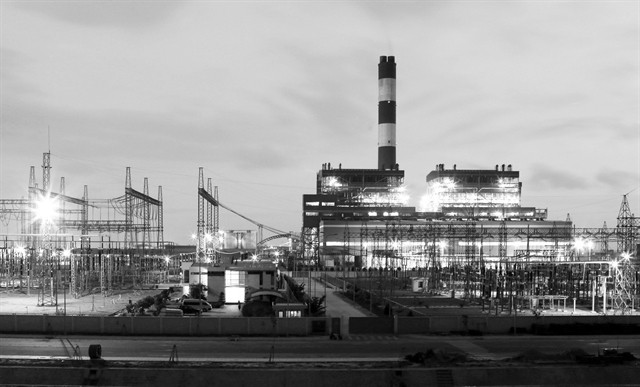 The Vinh Tan Power Centre has been criticised for causing air pollution in Binh Thuan province (Source: VNA)
The Vinh Tan Power Centre has been criticised for causing air pollution in Binh Thuan province (Source: VNA)Hanoi (VNS/VNA) - An increase in the number of industrial zones has beenpolluting Vietnam’s environment, and there are no appropriate solutions inplace, the Ministry of Natural Resources and Environment (MONRE) warned in itsdraft 2019 report on environment protection released earlier this week.
Majorsources of environmental pollution come from socio-economic developmentactivities, the ministry stated, reflected in 372 industrial zones beingestablished last year, including 280 coming beginning operation, 29 more thanin 2018.
In addition,with nine industrial clusters added in 2019, Vietnam now has 698 clusters.
Along withfactories and manufacturing areas, high polluting industries includingmetallurgy, mining, ship demolition and thermal power are placing Vietnam’senvironment under pressure.
MONRE’s datashows more than 5,000 mines and natural resource exploiting areas, 300 paperproduction factories, 25 thermal power plants under commercial operation and 65iron and steel production projects have a capacity of 100,000 tonnes per yeareach nationwide.
The ministryalso pointed out companies generating large amounts of toxic waste such as NghiSon Refinery in Thanh Hoa province, Hung Nghiep Formosa Steel Plant in HaTinh province which caused themarine life disaster in four central provinces in 2016 and Lam DongAluminum-Bauxite Complex which has been blamed for damaging the CentralHighlands’ environment.
As ofDecember 2019, there were 171 facilities causing serious environmentalpollution which had not implemented complete measures to tackle pollution.
On more than31,600 farms nationwide, up to 1,000kg of fertiliser and 2kg of pesticide areused for each hectare of agricultural land annually.
The ministryestimates about 240 tonnes of toxic solid waste is discharged into theenvironment from agricultural activities annually.
According toMONRE, the number of handicraft villages and cities also increased overthe past two years.
There aresome 4,500 villages focusing on making traditional products nationwide.The country’s urbanisation rate in 2019 reached 39.2 percent, up 0.8 percentcompared to 2018.
Transportation,the ministry says, is one of the main causes of air pollution, especially inhighly populated urban areas.
The numberof cars in 2019 rose by 12.2 percent compared to the previous year, standing at3.6 million.
Climatechange is also threatening Vietnam’s security of water, food and ecosystemand worsening existing pollution.
While coastallocalities struggle to deal with ocean plastic and oil spills, MekongDelta provinces are sinking under the impact of sea-level rise and dam-buildingon the Mekong River.
The countryis expected to suffer its highest temperatures ever recorded in 2020, accordingto Meteorological and Hydrological Administration.
Due to theimpact of global warming and the melting of glaciers, 2020 will be the year ofescalating and complicated natural disasters.
The annualflood peak at the headwaters of the Mekong river on Tien river in Tay Ninh province’sTan Chau Town and Hau river in An Giang province’s Chau Doc district ispredicted to be 0.2 to 0.4 m lower than the annual flood peak and will appearby the end of September./.




























